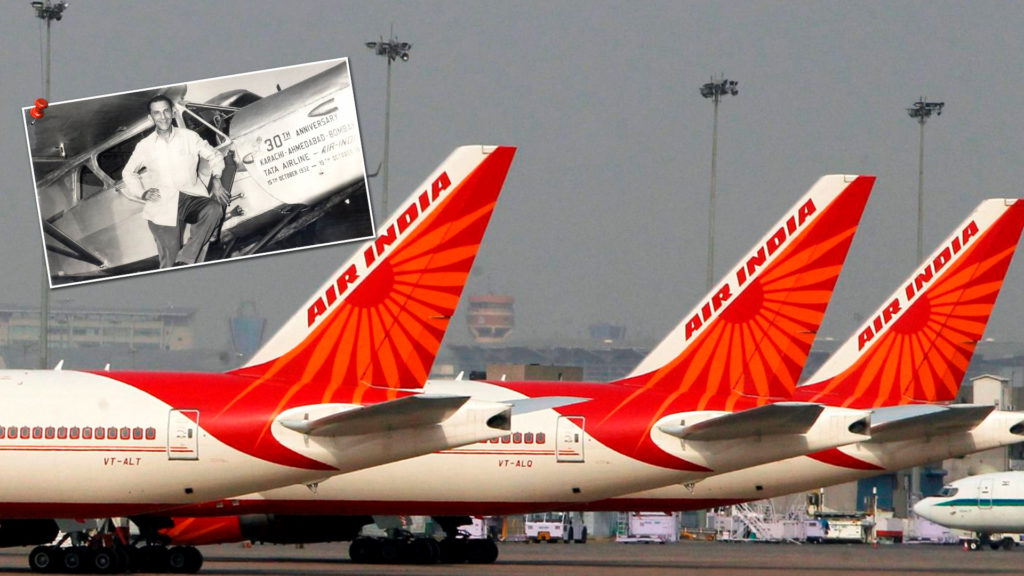Speculation over Tata Group acquiring Air India
One of India’s biggest conglomerates, Tata Group’s acquisition of India’s flagship carrier Air India is now a nationwide speculation; however, the odds of reclaiming a debt-laden company on top of Tata’s existing dire ventures looks more fictional than enterprising.
Salt to software, coffee to chemicals, the USD 103 billion Tata Group is in the headlines of the Indian media for initial interests in Air India Ltd. Albeit, the story sounds more like a fancy silver screen saga of a man reclaiming his father’s property taken forcibly six decades back, the reality of the acquisition and the premise of the privatisation of Air India remains compulsively cloudy. The recent reports of Tata Group’s discussions of buying a controlling stake in the ailing Air India from the government is considered more as a moral boost to the country’s largest industrial empire and also the original founder and owner of the national carrier. However, the major concerns that the Tata Group might be keen to introspect would be figures that are not at all inspiring.
Air India is plagued by more than the problem of the talks of privatisation. While the airline is striving hard to revive itself from the heavy burden of a monumental USD 8 billion debt, issues such as the amalgamation of Air India and Indian Airlines, the demand for fleet expansion to address new domestic and international routes and a decade-long loss makes the airline an investment asset that inspires weariness and apprehension.
Ratan Tata loves planes
If the speculations are confirmed, this would not be the only airline in the Tata Group portfolio. The group’s endeavour in an increasingly challenging aviation market is not new as Tata has already put in their stakes in two major domestic carriers. With an equal stake in low-cost carrier AirAsia India in partnership with Malaysia’s Air Asia and a controlling stake in a premium airline Vistara in a joint venture with Singapore Airlines, Ratan Tata has established himself as an airline aficionado not only in Indian media but also in the likes of Bloomberg.
It is believed that the Tata group can recoup Air India and fuse it in a joint venture with Singapore Airlines, giving the latter a firm foothold in India’s aviation market. While Airbus projects India’s air traffic will expand more than fivefold between 2015 and 2035, Air India, which is also a full-service carrier with an envious market share of the Indian aviation market, would be an interesting addition to its existing business portfolio. Although Air India’s brand and service positioning are quite different than AirAsia, it might be in direct competition to Vistara on certain routes and sectors, although Vistara’s fleet of 14 aircraft is no match to Air India’s 118 airplanes.
But will he repay the loans?
The crucial impending challenge for Tata Group, before it decides to buy the controlling stakes of Air India, is the monumental debt of over INR 500 billion (EUR 6.9 billion), with about INR 280 billion (EUR 3.8 billion) in working capital debt, and about INR 40 billion (EUR 554.7 million) in interest burden alone. It has not turned a profit in 10 years, since at least the year 2007. In a situation where there is intense competition from leaner, more efficient and often cheaper private airlines, the move might be a tricky one in a situation where the Tata Group is still to digest another overpriced acquisition made a decade ago – the USD 12.9 billion purchase of Corus Group Plc’s steel assets.
Whether the government will bring the airline’s debt down to a substantially lucrative deal for the Tata Group or the group will reconsider its move is yet to be revealed. Moreover, it is still not clear whether the government is looking for partial disinvestment through dilution of controlling stake or an outright privatisation with selling 100 pc stakes and complete exit.
1932: Tata Airline
1948: Air India
1953: Air India International is nationalised
2017: Tata Group may buy Air India!#fullcircle— Mohandas Menon (@mohanstatsman) June 21, 2017
India’s aviation market
While the speculation from industry experts have highlighted the debt-laden airline as a burden that Tata Group might absorb, Air India’s huge fleet of 118 aircraft and an experienced workforce still holds a valuable 14 pc market share in the domestic market. Air India also flies to long-haul and short-haul international destinations with 17 pc of the international traffic to and fro India. Additionally, the years of operations, the size of the fleet of aircraft, with a formidable market position both at home and abroad means Air India has an easier position in terms of its parking slots at major airports around the world such as New York and London. With a passion that is synonymous with the Tata Group and a keen interest in the growing aviation market in the country, the acquisition of the valued airline could turn out to be one of the game-changing moves in the Indian skies.












